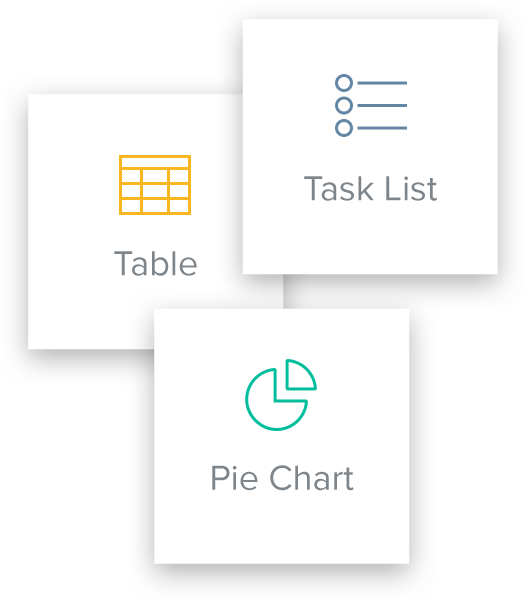How To Create A Customer Success Plan (With Template and Examples)
Updated by Xtensio
The customer success plan outlines the “what” and “how” your customer success team will deliver value throughout the customer lifecycle. If effective, the customer success plan should mitigate potential problems with onboarding, adoption, and operations, outline ways to reduce churn, and provide the entire team with big-picture goals and achievements. Use this step-by-step guide to create and iterate on your user-customer success plan, easily. Explore this template.
Xtensio is your team space for beautiful living documents.
Create, manage and share business collateral, easily.
Table of Contents
Your guide to creating a strategic customer success plan
Customer success teams are responsible for increasing customer retention and lowering the company’s turnover rate. The customer success plan template will assist your company in laying out a clear strategy for delivering value across the client lifecycle.
- Focus your customer success efforts on illuminating how your product exceeds your customers’ expectations and how you can help them see and realize that value.
- Facilitate product adoption, prevent your customers from churning, and create customer and product advocates.
- Align expectations and goals across your company to map out your expansion strategy.
With Xtensio, you can easily generate a customer success plan tailored and loop in your CS, marketing, and sales teams to create an effective, ongoing customer engagement strategy. You can work hand-in-hand with your team on a live doc, leave feedback, or share a link to maintain visibility across your organization.
1. Create your customer success plan header
Introduce your customer engagement plan by adding your company name, uploading your logo, and adding the date and name of the person creating the plan. You can also update the folio color scheme and background to match your company branding.
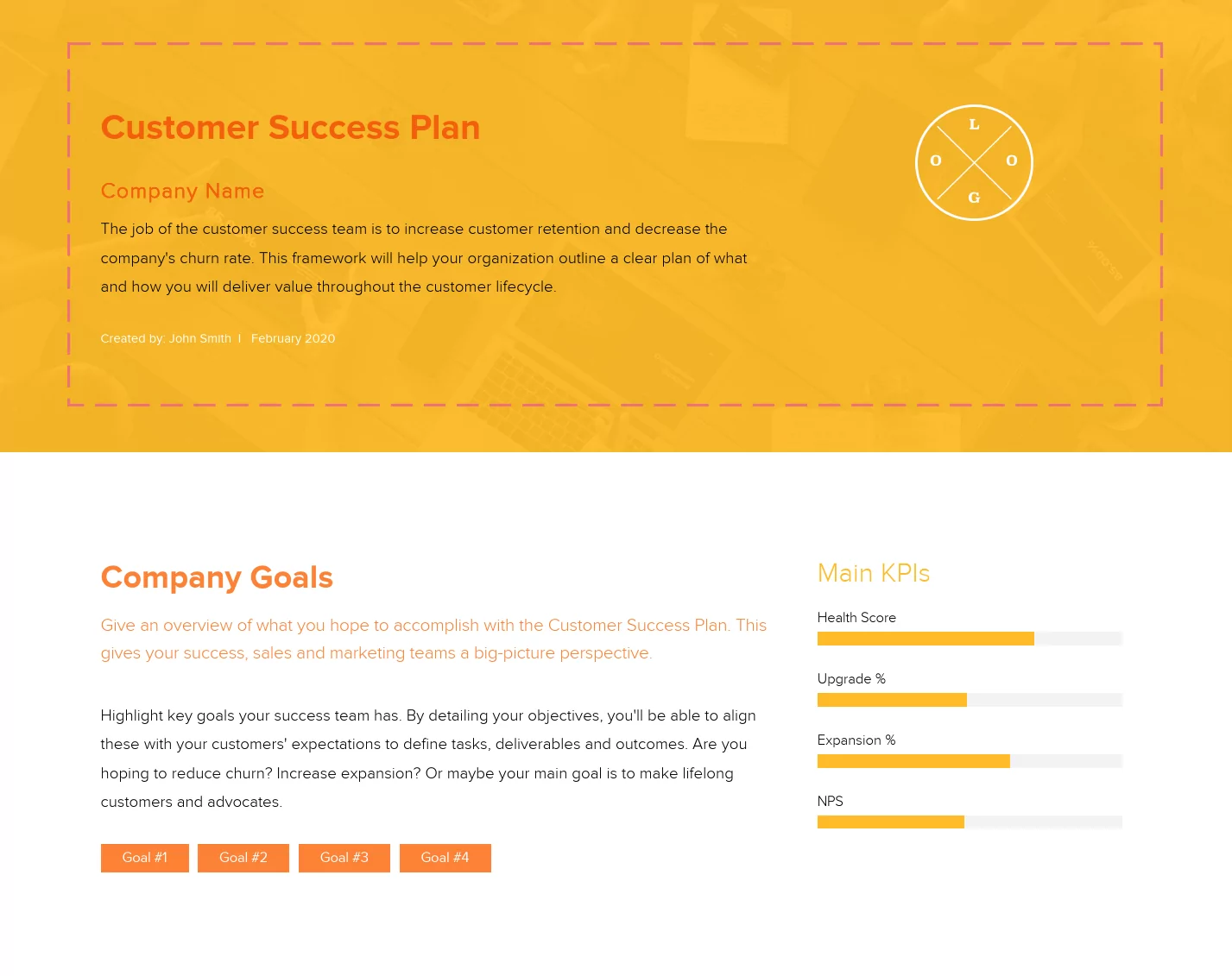
2. Highlight your customer success team’s key goals
Highlight key goals your success team has. By detailing your objectives, you’ll be able to align these with your customers’ expectations to define tasks, deliverables and outcomes.
- Are you hoping to reduce churn?
- Increase expansion?
- Or maybe your main goal is to make lifelong customers and advocates.
Use the tag module to highlight your key goals and designate a few KPIs you’ll use to ensure you’re reaching these goals.

3. Identify your ideal customer(s)
Identify at least 3 buyer/user personas to define your main use cases for onboarding and activation flows. Your success plan will focus on these personas’ main goals and expectations so you can align these with your organization’s goals to provide guidance and resources to help them reach the “aha” moment as quickly as possible.
Both internal and external sources should be used to gather customer expectations. Collaborate on the success plan with the sales and marketing teams, and gather data from customers, stakeholders, and partners.

4. Choose a customer engagement model
Before you create your onboarding and adoption processes, you’ll need to choose an engagement model that best suits your product/service for both processes. Consider these questions:
- What’s your company’s annual sales price?
- Will your revenue support high-touch CSM, or will you need an engagement model with a lower cost?
You might choose a combination of onboarding and adoption processes – high-touch onboarding and low-touch adoption.
- High-touch onboarding involves hands-on implementation of your product/service into the client’s workflow.
- High-touch adoption typically assigns a dedicated customer success manager to each account after onboarding for check-in calls, renewals, upsells, etc.
- Low-touch onboarding is typically used by software or tools that can be purchased through the website and is easy to set up and use immediately.
- Low-touch adoption is completely digital. You’ll communicate via email, but won’t typically do the hand-on calls associated with high-touch adoption.
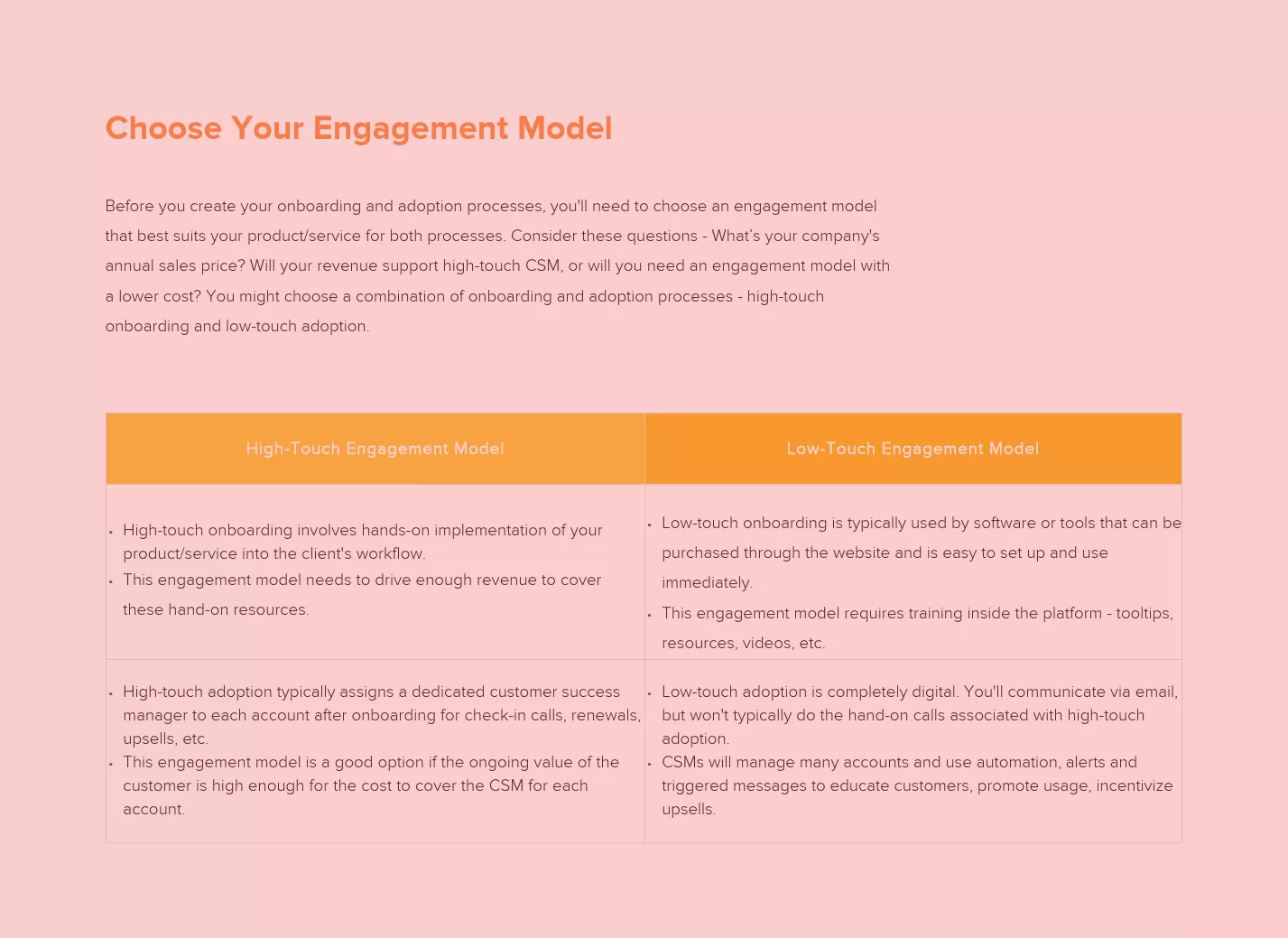
5. Define and detail quantifiable goals and metrics
Make sure to use SMART goals and regularly check your progress with strong KPIs. Here’s how:
- Specific: Who? What? Where? Why? When?
- Measurable: What are the metrics? Any numbers or percentages to reach?
- Achievable: Do you have the resources and skills to reach the goal you are setting?
- Realistic: Does it match your organization’s overall goals?
- Timely: When will you finalize this project?

6. Outline messaging and engagement flows
Outline your messaging and engagement flows in this area. For each of your key use cases, create a unique engagement sequence. Duplicate the section from the floating menu to the left of the section and repurpose this layout if you want to establish a continuous engagement process following the onboarding phase.
For each of your main use cases, outline what specific tasks and milestones they need to reach to meet their goals and expectations and correlate those with important messages or touchpoints from your customer success team.
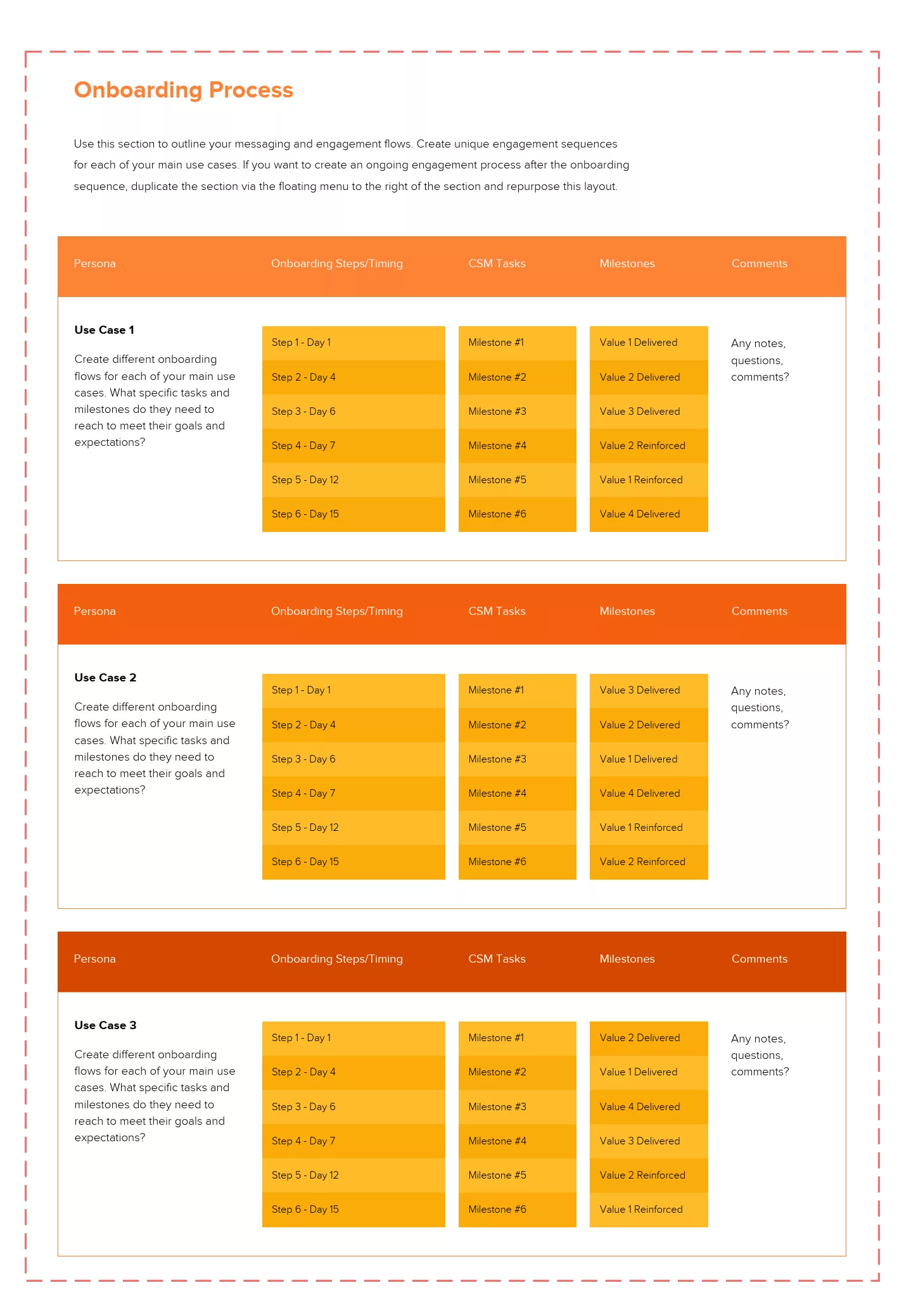
Share your customer success plan as a link, monitor, evaluate & iterate
Our customer success playbook should be centered around your target customers’ expectations. If effective, the customer success plan should mitigate potential problems with onboarding, adoption and operations, outline ways to reduce churn and provide the entire team with the big picture goals and achievements. This playbook then acts as a crucial tool for aligning resources and objectives for customer success managers.
When you’ve finished creating your customer success playbook with Xtensio’s editor, you can send the live link to your folio to share it as a responsive webpage (and add password protection), export a PDF and post it on your bulletin board and continuously optimize with new learnings. The user customer success plan is adaptable just like other Xtensio tools, it can and should be repurposed, revisited, and revised regularly.
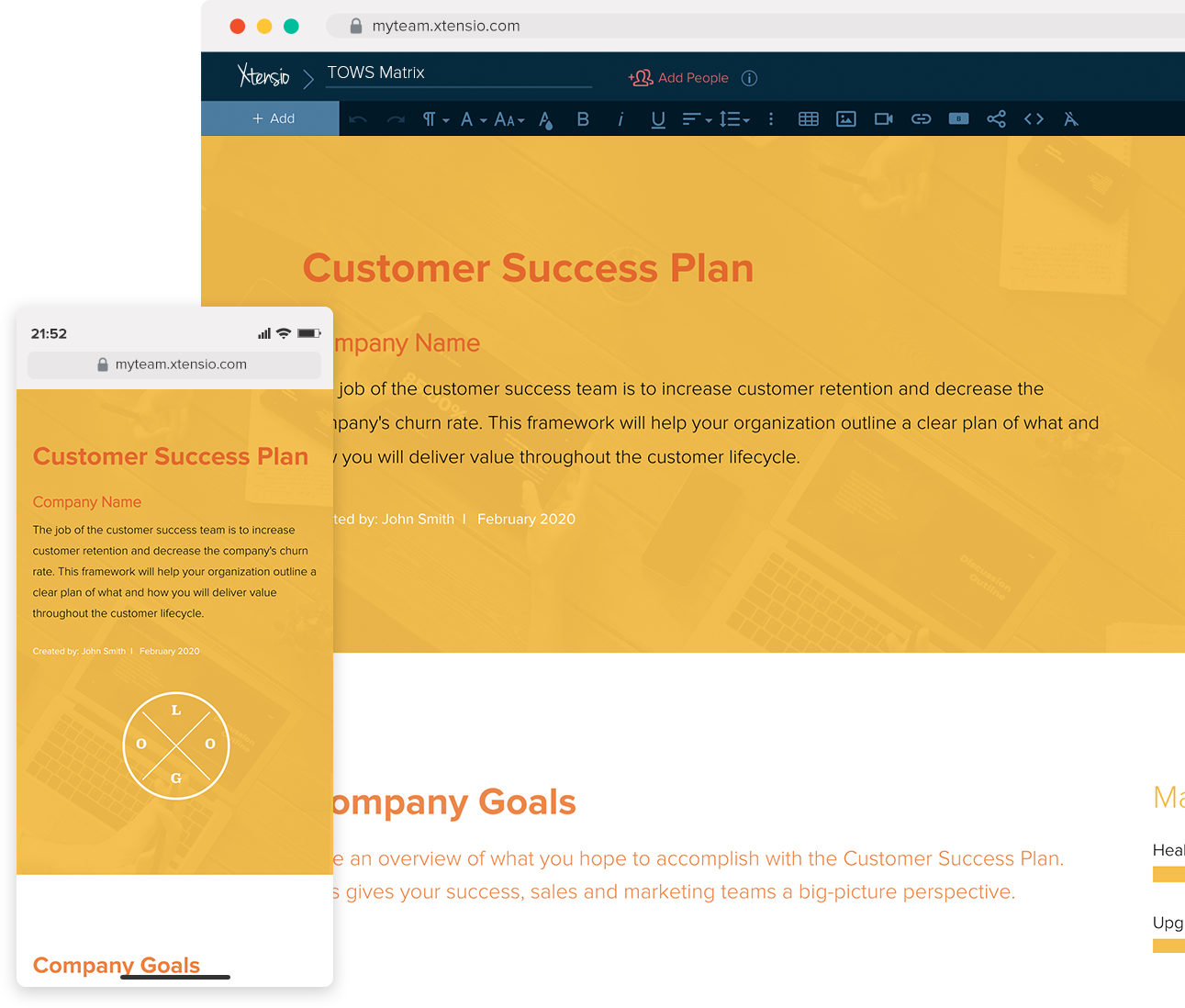
Design, manage and share beautiful living documents… easily, together. Explore Xtensio
- Click and edit anything… together.
- Customize to match your branding.
- Share with a link, present, embed or download.




